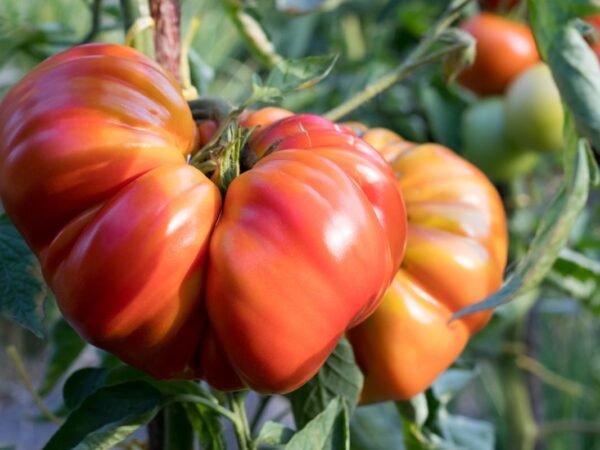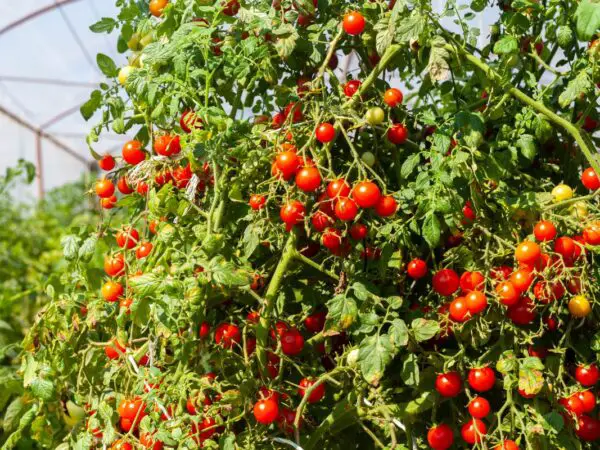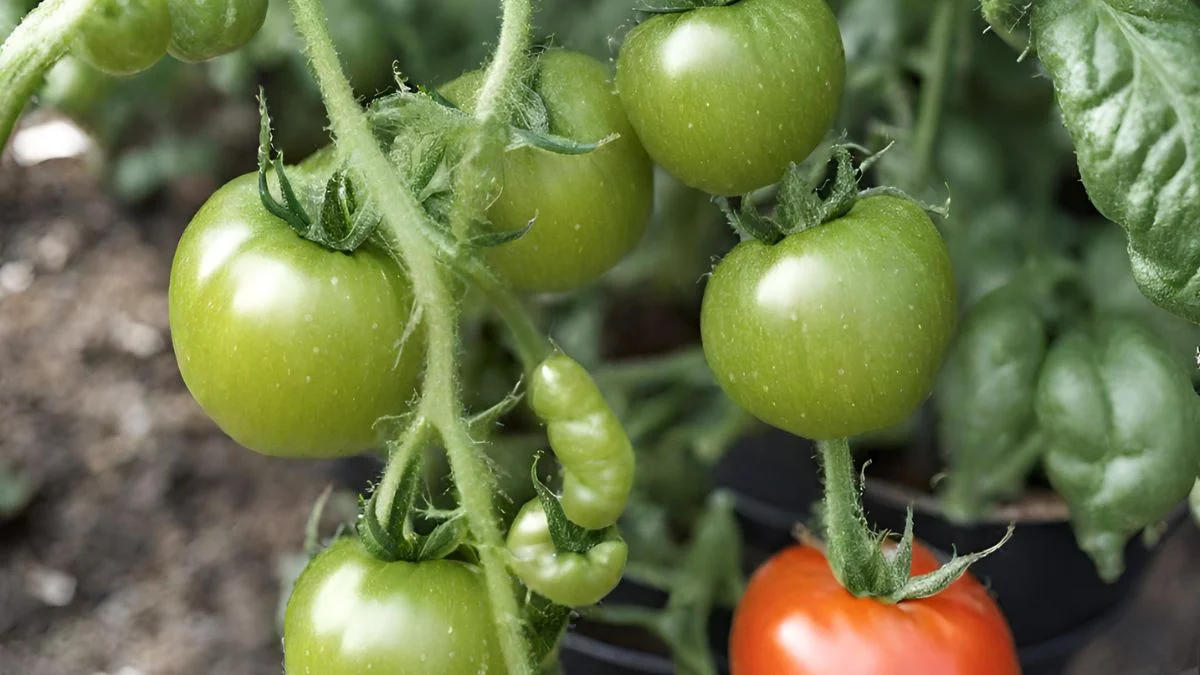
Did you know that white specks on tomato plants could signal a common fungal disease known as powdery mildew? If your tomato plants are showing these symptoms, fret not - we've got you covered with essential tips and solutions to help your plants thrive.
Powdery mildew thrives in warm, dry conditions and can quickly spread if left untreated. In our detailed guide below, we will delve into the causes of white specks on tomato plants, effective prevention strategies, practical remedies, and treatment to combat this pesky issue. Stay tuned for expert advice on how to protect your beloved tomato plants from powdery mildew and ensure a bountiful harvest this season.
Key Takeaways
Identify Causes: Understand the reasons behind white specks on tomato plants to address the issue effectively.
Implement Solutions: Utilize fungal disease solutions, pest control strategies, and environmental adjustments to combat white specks on tomato plants.
Manage Nutrients: Ensure proper nutrient management to promote healthy tomato plant growth and reduce the occurrence of white specks.
Seek Expert Advice: Benefit from expert advice highlighted in the article to gain insights into effectively managing white specks on tomato plants.
Prevent Future Occurrences: Apply prevention techniques and advanced care tips to prevent white specks from appearing on tomato plants.
Prioritize Safety: Consider safety measures while implementing strategies to protect both plants and individuals.
Identifying Causes
Fungal Diseases
Fungal diseases like early blight and late blight are common issues for tomato plants. These diseases manifest as dark spots on leaves, affecting overall plant health. To prevent fungal infections, ensure proper air circulation around plants and avoid overhead watering. Prompt treatment with fungicidal sprays can help contain the spread.
Pest Infestations
Various pests such as aphids and tomato hornworms can infest tomato plants, causing damage to leaves and fruits. Introduce natural predators like lady beetles to control pest populations organically. Alternatively, consider using horticultural oil or neem oil as natural insecticides to manage pest infestations effectively.
Environmental Factors
Environmental conditions play a crucial role in tomato plant health. Adjust watering schedules based on factors like temperature and humidity levels to prevent issues like root rot. Providing adequate sunlight exposure while shielding plants from extreme weather conditions such as excessive heat or cold is essential for optimal growth.
Nutrient Deficiencies
Identifying signs of nutrient deficiencies, such as yellowing leaves or stunted growth, is vital for maintaining healthy tomato plants. Tailor fertilizer applications to address specific nutrient needs; for instance, use a balanced fertilizer rich in nitrogen for leafy growth. Regularly monitoring plant health helps prevent nutrient deficiencies before they impact overall yield.
Fungal Diseases Solutions
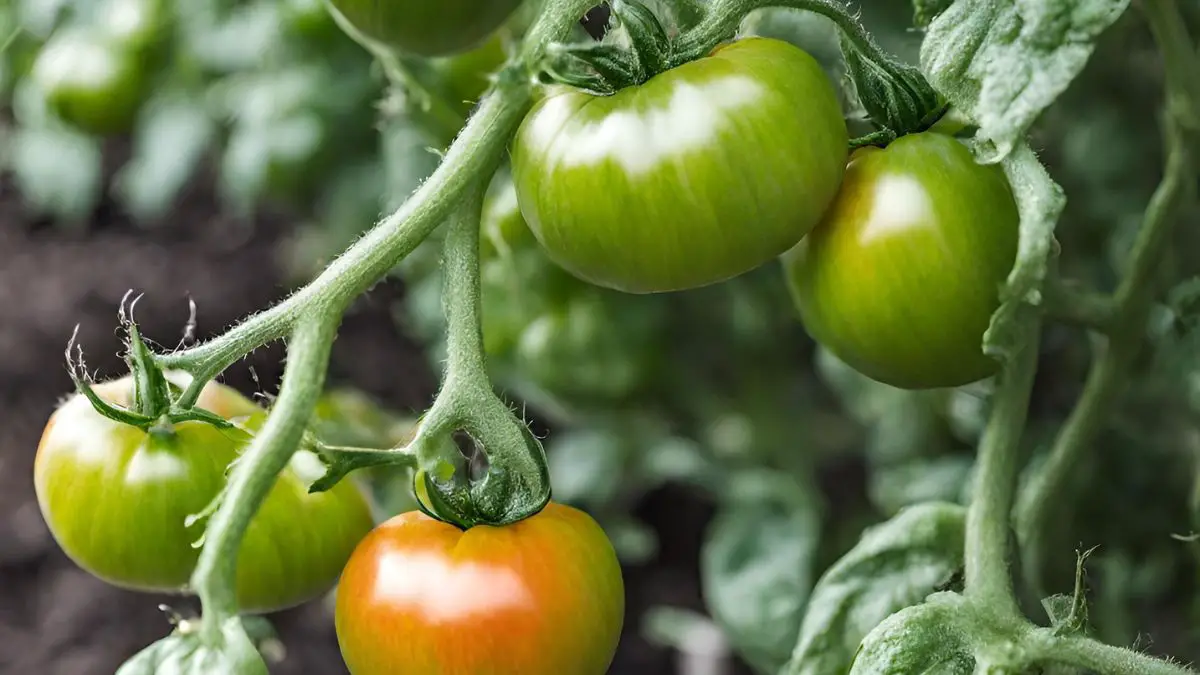
Managing Powdery Mildew
Powdery mildew on tomato plants manifests as white powdery spots on leaves and stems. Prune affected parts to prevent spreading. Apply sulfur-based fungicides or neem oil to control the disease effectively. Ensure adequate spacing between plants for better air circulation.
Solutions for Late Blight
Late blight causes dark spots on tomato leaves, leading to plant withering. Remove infected leaves immediately to curb spread. Consider using copper-based fungicides, which are effective against late blight. Implement preventive measures like crop rotation to minimize the risk of infection.
Pros:
Effective in controlling fungal diseases.
Organic fungicides are eco-friendly.
Cons:
Regular application may be needed.
Some natural remedies might not be as potent as chemical fungicides.
Preventing Fungal Infections
To prevent fungal infections, ensure plants receive adequate sunlight and have good airflow. Avoid overhead watering, which can promote fungal growth. Use copper sprays or baking soda solutions as organic fungicides.
Steps to Prevent Fungal Infections:
Trim lower leaves to improve airflow.
Water at the base of plants in the morning.
Apply mulch to reduce soil splash-back onto leaves.
Pest Control Strategies
Natural Pest Solutions
Whiteflies Control
Identify whiteflies as common pests on tomato plants.
Introduce natural predators like parasitic wasps for whitefly control.
Use sticky traps or insecticidal soaps to manage whitefly infestations.
Eliminating Leafminers
Recognize leafminer damage on tomato plant leaves.
Remove affected leaves to prevent leafminer spread.
Consider introducing beneficial insects to control leafminer populations.
Preventing Pest Intrusion
Implement physical barriers to prevent pests from reaching tomato plants. Use companion planting to deter common pests from infesting tomatoes. Regularly inspect plants for early signs of pest intrusion.
Environmental Adjustments
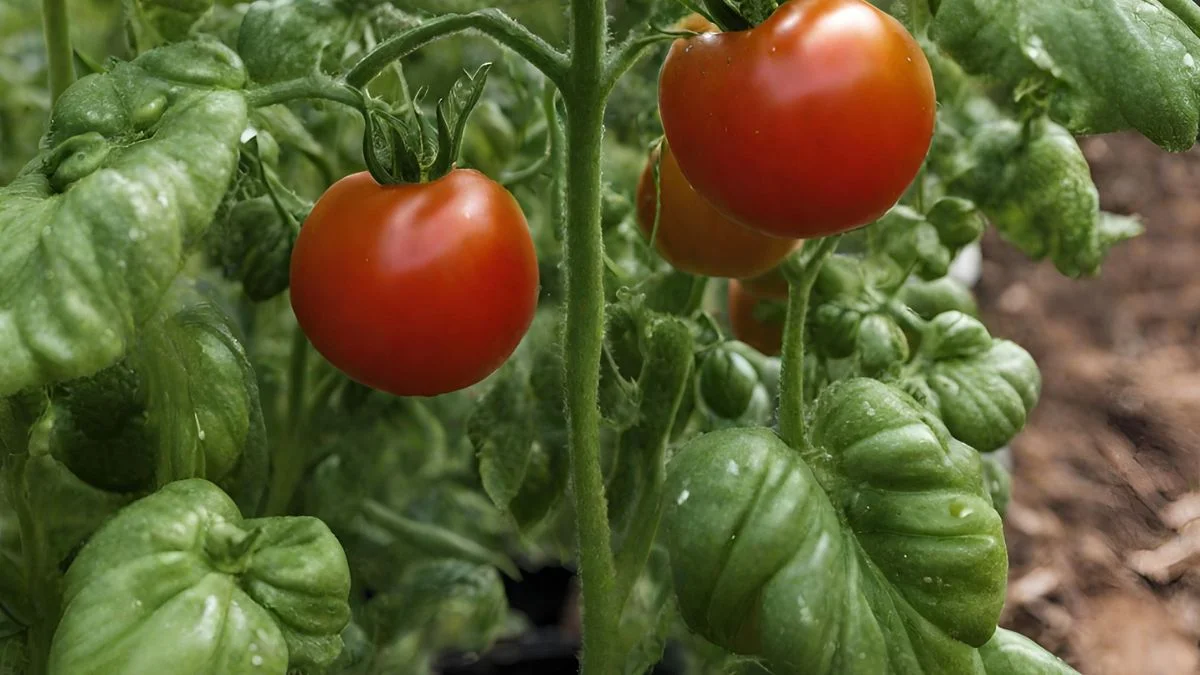
Protecting from Sun Damage
Shield tomato plants from excessive sunlight to prevent sunburn. Provide shade during peak sunlight hours to protect plants. Water plants adequately to help them cope with high temperatures.
Addressing Salt Build-Up
Identify symptoms of salt build-up in soil affecting tomato plants. Flush soil with water to remove excess salts. Adjust watering practices to prevent salt accumulation in the soil.
Nutrient Management
Identifying Deficiencies
Tomato plants showing white specks may signal nutrient deficiencies. Observe the plant for yellowing leaves or stunted growth. Test soil pH using a kit to pinpoint lacking nutrients such as nitrogen, phosphorus, or potassium.
Supplement deficient nutrients by applying targeted fertilizers. Choose fertilizers rich in the lacking nutrients to promote healthy growth. Follow package instructions carefully to avoid over-fertilization, which can harm the plants.
Avoiding Salt Build-Ups
Prevent salt build-ups by ensuring proper soil drainage. Excess salts can accumulate in poorly drained soil, affecting plant health. Use rainwater or distilled water for irrigation to minimize salt content in the soil.
Regularly monitor soil salinity levels with a salinity meter. This helps prevent salt build-up before it harms the tomato plants. Adjust watering practices based on salinity readings to maintain optimal soil conditions.
Expert Advice Highlighted
Expert Solutions
Seek professional advice for complex issues in tomato plant care. Consult with local agricultural extension services for expert solutions. Consider hiring a horticulturist for personalized plant care recommendations.
Expert Prevention Tips
Receive expert guidance on preventing common tomato plant problems. Attend workshops or webinars on plant health led by experts. Follow expert-recommended practices to maintain healthy tomato plants.
Prevention Techniques
Avoiding Future Issues
Implement long-term strategies to prevent recurring tomato plant problems. Keep records of plant care practices to identify patterns and avoid future issues. Rotate crops regularly to minimize the risk of pest and disease recurrence.
Enhancing Plant Health
Focus on overall plant health to promote disease resistance. Provide optimal growing conditions for robust tomato plants. Incorporate organic matter into the soil to improve plant vitality.
Advanced Care Tips
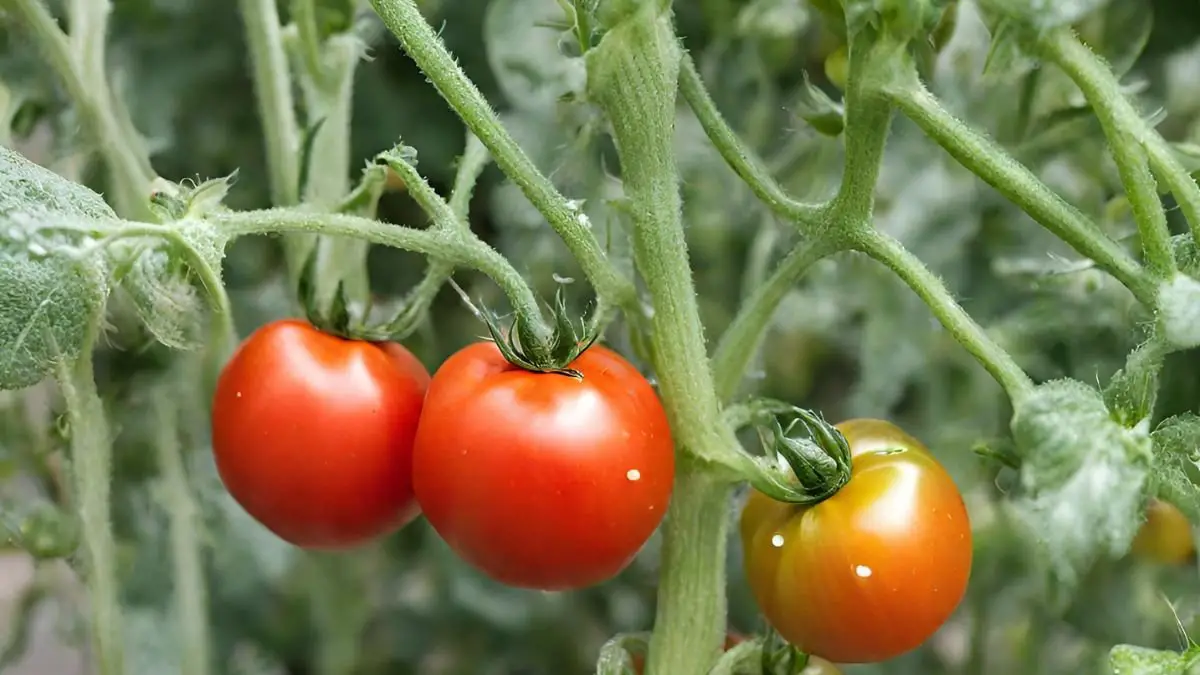
Managing Tomato Mosaic Virus
Identifying symptoms of tomato mosaic virus is crucial for early detection and intervention. Look for yellow-green mottling on leaves, stunted growth, and distorted fruits. Act swiftly upon spotting these signs to prevent further spread.
Promptly remove infected plants to contain the virus. Uprooting and disposing of affected plants can prevent the virus from spreading to healthy ones nearby. This proactive measure is key in maintaining a healthy tomato crop.
To prevent transmission, ensure to disinfect tools and equipment after handling infected plants. Cleaning tools with a solution of bleach or alcohol can effectively kill any lingering virus particles, reducing the risk of spreading it inadvertently.
Improving Tomato Health
Implement various practices to bolster the overall health of your tomato plants. By creating a conducive environment, you can significantly enhance plant resilience and productivity. Encouraging the presence of beneficial insects, such as ladybugs and lacewings, helps control pests naturally without harmful chemicals.
Organic fertilizers play a vital role in supporting plant growth and vitality. They provide essential nutrients while fostering soil health, promoting robust root development and overall plant vigor. By opting for organic options, you ensure a sustainable and eco-friendly approach to nurturing your tomato plants.
Safety Considerations
Safety of White-Specked Tomatoes
Consumers should understand the safety implications of consuming tomatoes with white specks. Washing tomatoes thoroughly before consumption is crucial to remove any residues that may be harmful. Seeking advice from agricultural experts regarding the safety of affected tomatoes is recommended.
When dealing with white-specked tomatoes, it's essential to prioritize food safety. The presence of white spots could indicate the presence of mold or diseases, which can be harmful if ingested. Therefore, thorough washing is necessary to eliminate any potential risks associated with these specks.
To ensure the safety of your produce, consider creating a solution using one part vinegar and three parts water for washing your tomatoes. This simple yet effective method can help remove contaminants, including those causing the white specks.
Pros:
Increased awareness of food safety practices
Reduced risk of consuming contaminated produce
Cons:
Additional time and effort required for washing produce
Potential need for expert advice on safe consumption practices
Summary
In conclusion, by identifying the causes of white specks on tomato plants, implementing fungal disease solutions, applying pest control strategies, making necessary environmental adjustments, managing nutrients effectively, seeking expert advice, following prevention techniques, incorporating advanced care tips, and considering safety measures, you can ensure the health and vitality of your tomato plants. Remember to stay vigilant and proactive in maintaining your plants to prevent issues before they escalate. Your dedication and care will result in a thriving garden with luscious tomatoes for you to enjoy. Keep nurturing your plants with the knowledge and techniques you've gained to foster a bountiful harvest.
Frequently Asked Questions
What are the common causes of white specks on tomato plants?
White specks on tomato plants can be caused by various factors such as fungal diseases, pests like spider mites, environmental stressors, nutrient deficiencies, or even improper care practices. Identifying the specific cause is crucial for effective treatment.
How can I effectively manage fungal diseases affecting my tomato plants?
To manage fungal diseases on tomato plants, consider using organic fungicides, ensuring proper air circulation around plants, removing infected leaves promptly, and avoiding overhead watering. Regularly inspecting your plants for early signs of infection is key to preventing widespread issues.
What pest control strategies can I implement to address white specks on my tomato plants?
Implement pest control strategies like releasing beneficial insects, using neem oil or insecticidal soap, practicing crop rotation, and maintaining good garden hygiene to combat pests like spider mites that may cause white specks on tomato plants.
Are there any environmental adjustments I should make to prevent white specks on my tomato plants?
Maintain optimal humidity levels, provide adequate sunlight exposure, avoid overcrowding plants, and ensure proper ventilation in your garden to create an environment less conducive to the development of fungal diseases or pest infestations that result in white specks.
How important is nutrient management in preventing white specks on tomato plants?
Proper nutrient management is essential for healthy tomato plants. Ensure a balanced fertilizer application rich in essential nutrients like nitrogen, phosphorus, and potassium. Monitor soil pH levels regularly and supplement with micronutrients as needed to prevent nutrient deficiencies that can lead to plant issues.
Should I seek expert advice if I notice white specks on my tomato plants?
Seeking expert advice from local extension services or experienced gardeners can provide valuable insights into identifying the specific cause of white specks on your tomato plants and implementing appropriate solutions tailored to your unique gardening situation. Expert guidance can help you address the issue effectively and prevent future occurrences.
Image Source: Paid image from CANVA

